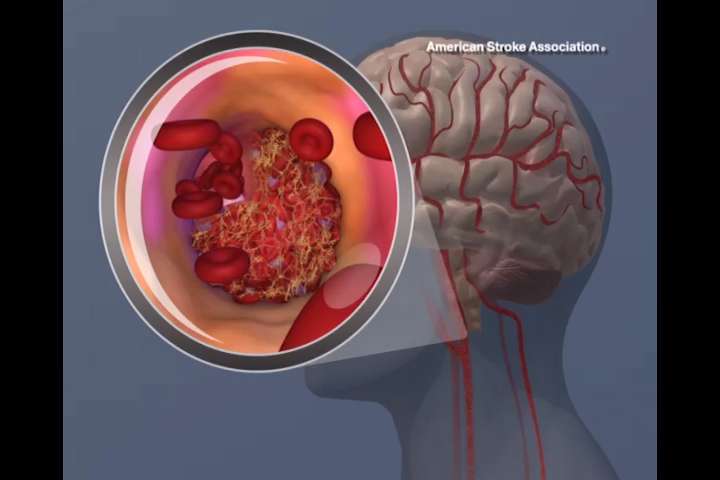A blood clot forming in the carotid artery. Credit: American Heart Association
A simple finger-to-nose test by medical professionals almost doubled the recognition of possible stroke involving the circulation at the back of the brain, according to preliminary research presented at the American Stroke Association's International Stroke Conference 2018, a world premier meeting dedicated to the science and treatment of cerebrovascular disease for researchers and clinicians.
Posterior strokes represent up to a quarter of all stroke admissions to the hospital, but there are often delays in diagnosis because the patients may not have the typical stroke signs included in screening tools used by emergency medical technicians (EMTs).
In a new study, researchers compared the recognition of posterior strokes between EMTs who received standard training in stroke screening with EMTs who received standard training plus in-person training in the "finger-to-nose test." In this simple coordination test the patient alternates touching their own nose and the examiner's finger. Performance can be impaired in posterior stroke.
The researchers found:
- After training including the finger-to-nose test, EMTs recognized 12 of 16 (75 percent) posterior strokes, compared with 9 of 26 (38 percent) in the 12 months prior to training.
- After routine training (not including the finger-to-nose test), EMTs recognized 13 of 28 (46 percent) posterior strokes, compared with 10 of 36 (28 percent) in the 12 months prior to training, an improvement that was not statistically significant.
Provided by American Heart Association





















